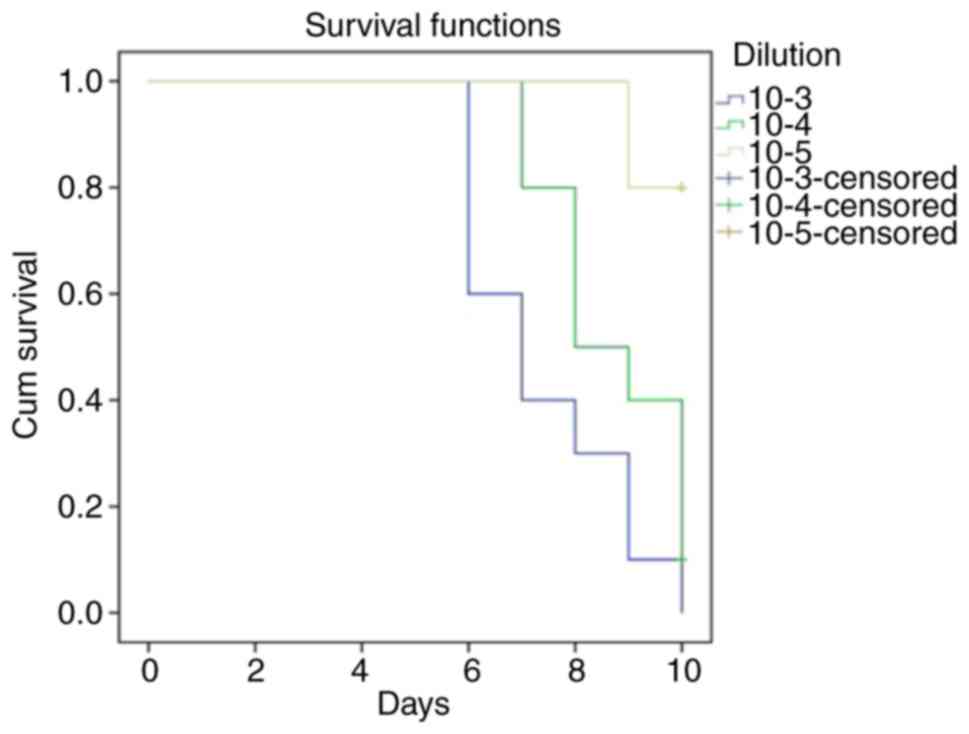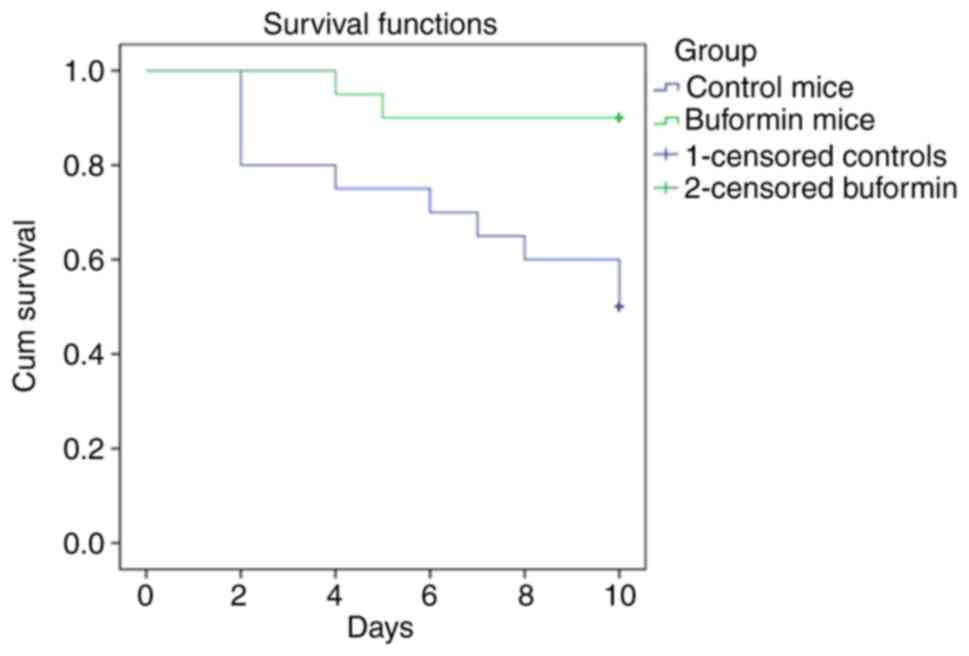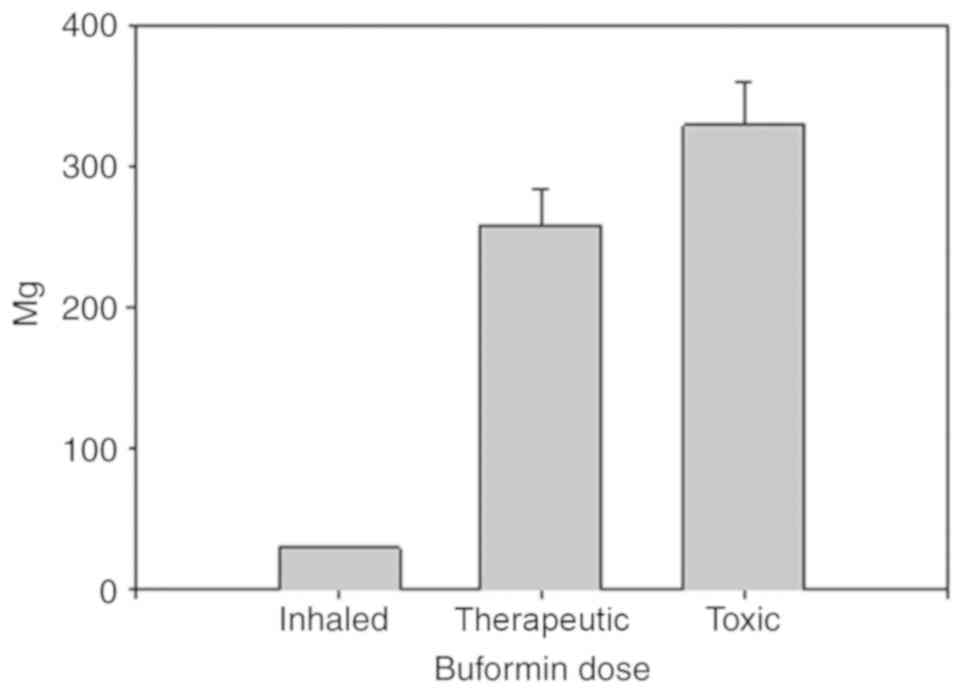|
1
|
Doyle JD, Chung JR, Kim SS, Gaglani M,
Raiyani C, Zimmerman RK, Nowalk MP, Jackson ML, Jackson LA, Monto
AS, et al: Interim estimates of 2018-19 seasonal influenza vaccine
effectiveness-United States, February 2019. MMWR Morb Mortal Wkly
Rep. 68:135–139. 2019.PubMed/NCBI View Article : Google Scholar
|
|
2
|
Cohen J: Waning immunity. Science.
364:224–227. 2019.PubMed/NCBI View Article : Google Scholar
|
|
3
|
Moscona A: Neuraminidase inhibitors for
influenza. N Engl J Med. 353:1363–1373. 2005.PubMed/NCBI View Article : Google Scholar
|
|
4
|
O'Hanlon R and Shaw ML: Baloxavir
marboxil: The new influenza drug on the market. Curr Opin Virol.
35:14–18. 2019.PubMed/NCBI View Article : Google Scholar
|
|
5
|
Takashita E, Ichikawa M, Morita H, Ogawa
R, Fujisaki S, Shirakura M, Miura H, Nakamura K, Kishida N,
Kuwahara T, et al: Human-to-human transmission of influenza A(H3N2)
virus with reduced susceptibility to baloxavir, Japan, February
2019. Emerg Infect Dis. 25:2108–2111. 2019.PubMed/NCBI View Article : Google Scholar
|
|
6
|
Ma XM and Blenis J: Molecular mechanisms
of mTOR-mediated translational control. Nat Rev Mol Cell Biol.
10:307–318. 2009.PubMed/NCBI View
Article : Google Scholar
|
|
7
|
Keating R, Hertz T, Wehenkel M, Harris TL,
Edwards BA, McClaren JL, Brown SA, Surman S, Wilson ZS, Bradley P,
et al: The kinase mTOR modulates the antibody response to provide
cross-protective immunity to lethal infection with influenza virus.
Nat Immunol. 14:1266–1276. 2013.PubMed/NCBI View
Article : Google Scholar
|
|
8
|
Nikolaidis NM, Noel JG, Pitstick LB,
Gardner JC, Uehara Y, Wu H, Saito A, Lewnard KE, Liu H, White MR,
et al: Mitogenic stimulation accelerates influenza-induced
mortality by increasing susceptibility of alveolar type II cells to
infection. Proc Natl Acad Sci USA. 114:E6613–E6622. 2017.PubMed/NCBI View Article : Google Scholar
|
|
9
|
Wang CH, Chung FT, Lin SM, Huang SY, Chou
CL, Lee KY, Lin TY and Kuo HP: Adjuvant treatment with a mammalian
target of rapamycin inhibitor, sirolimus, and steroids improves
outcomes in patients with severe H1N1 pneumonia and acute
respiratory failure. Crit Care Med. 42:313–321. 2014.PubMed/NCBI View Article : Google Scholar
|
|
10
|
Chuang YC, Ruan SY and Huang CT:
Compelling results of adjuvant therapy with sirolimus for severe
H1N1 pneumonia. Crit Care Med. 42:e687–e688. 2014.PubMed/NCBI View Article : Google Scholar
|
|
11
|
Ison MG: Adjuvant immunosuppression in the
management of severe influenza: Friend or foe? Crit Care Med.
42:457–459. 2014.PubMed/NCBI View Article : Google Scholar
|
|
12
|
Gupta A, Pant G, Mitra K, Madan J,
Chourasia MK and Misra A: Inhalable particles containing rapamycin
for induction of autophagy in macrophages infected with
Mycobacterium tuberculosis. Mol Pharm. 11:1201–1207.
2014.PubMed/NCBI View Article : Google Scholar
|
|
13
|
Carvalho SR, Watts AB, Peters JI, Liu S,
Hengsawas S, Escotet-Espinoza MS and Williams RO III:
Characterization and pharmacokinetic analysis of crystalline versus
amorphous rapamycin dry powder via pulmonary administration in
rats. Eur J Pharm Biopharm. 88:136–147. 2014.PubMed/NCBI View Article : Google Scholar
|
|
14
|
Weiner SM, Sellin L, Vonend O, Schenker P,
Buchner NJ, Flecken M, Viebahn R and Rump LC: Pneumonitis
associated with sirolimus: Clinical characteristics, risk factors
and outcome-a single-centre experience and review of the
literature. Nephrol Dial Transplant. 22:3631–3637. 2007.PubMed/NCBI View Article : Google Scholar
|
|
15
|
Clements A, Gao B, Yeap SH, Wong MK, Ali
SS and Gurney H: Metformin in prostate cancer: Two for the price of
one. Ann Oncol. 22:2556–2560. 2011.PubMed/NCBI View Article : Google Scholar
|
|
16
|
Pollak M: Potential applications for
biguanides in oncology. J Clin Invest. 123:3693–3700.
2013.PubMed/NCBI View
Article : Google Scholar
|
|
17
|
Lehrer S, Rheinstein P and Mulshine J:
Inhaled buformin for lymphangioleiomyomatosis and early (airway
confined) lung cancer. American Association for Cancer Research
Annual Meeting Abstracts: 14.A.638.AACR, 2014.
|
|
18
|
Babinski S and Giermaziak H: Influenza
epidemic in 1971 in diabetics treated with 1-butyl-biguanidine
hydrochloride (Silubin retard) and 1-phenylethyl-biguanidine
hydrochloride (Phenformin). Pol Tyg Lek. 28:1815–1817. 1973.(In
Polish). PubMed/NCBI
|
|
19
|
Pinto F, Maillard JY, Denyer SP and
McGeechan P: Polyhexamethylene biguanide exposure leads to viral
aggregation. J Appl Microbiol. 108:1880–1888. 2010.PubMed/NCBI View Article : Google Scholar
|
|
20
|
Thakkar N, Pirrone V, Passic S, Keogan S,
Zhu W, Kholodovych V, Welsh W, Rando R, Labib M, Wigdahl B and
Krebs FC: Persistent interactions between biguanide-based compound
NB325 and CXCR4 result in prolonged inhibition of human
immunodeficiency virus type 1 infection. Antimicrob Agents
Chemother. 54:1965–1972. 2010.PubMed/NCBI View Article : Google Scholar
|
|
21
|
Denys A and Bocian J: Effect of
Silubin-retard (1-butyl-biguanide hydrochloride) on the course of
influenza-virus infection in mice. Pol Tyg Lek. 25:332–334.
1970.(In Polish). PubMed/NCBI
|
|
22
|
Orthel FW: Influenza virus titrations and
the inhibitor of hemagglutination in normal allantoic fluid. Arch
Gesamte Virusforsch. 38:347–356. 1972.PubMed/NCBI View Article : Google Scholar
|
|
23
|
Bocian J, Denys A and Czernek Z: Effect of
biguanidine derivatives phenformin and buformin on course of
infection with influenza virus in mouse. Dissertationes
Pharmaceuticae et Pharmacologicae. 23(581)1971.
|
|
24
|
Fukao K, Noshi T, Yamamoto A, Kitano M,
Ando Y, Noda T, Baba K, Matsumoto K, Higuchi N, Ikeda M, et al:
Combination treatment with the cap-dependent endonuclease inhibitor
baloxavir marboxil and a neuraminidase inhibitor in a mouse model
of influenza A virus infection. J Antimicrob Chemother. 74:654–662.
2019.PubMed/NCBI View Article : Google Scholar
|
|
25
|
Luft D, Schmülling RM and Eggstein M:
Lactic acidosis in biguanide-treated diabetics: A review of 330
cases. Diabetologia. 14:75–87. 1978.PubMed/NCBI View Article : Google Scholar
|
|
26
|
Garcia Rubino ME, Carrillo E, Ruiz Alcala
G, Dominguez-Martin A, A Marchal J and Boulaiz H: Phenformin as an
anticancer agent: Challenges and prospects. Int J Mol Sci.
20(E3316)2019.PubMed/NCBI View Article : Google Scholar
|
|
27
|
Garcia EY: Flumamine, a new synthetic
analgesic and anti-flu drug. J Philipp Med Assoc. 26:287–293.
1950.PubMed/NCBI
|
|
28
|
Bailey CJ: Metformin: Historical overview.
Diabetologia. 60:1566–1576. 2017.PubMed/NCBI View Article : Google Scholar
|
|
29
|
Patton JS, Fishburn CS and Weers JG: The
lungs as a portal of entry for systemic drug delivery. Proc Am
Thorac Soc. 1:338–344. 2004.PubMed/NCBI View Article : Google Scholar
|
|
30
|
Kindrachuk J, Ork B, Hart BJ, Mazur S,
Holbrook MR, Frieman MB, Traynor D, Johnson RF, Dyall J, Kuhn JH,
et al: Antiviral potential of ERK/MAPK and PI3K/AKT/mTOR signaling
modulation for Middle East respiratory syndrome coronavirus
infection as identified by temporal kinome analysis. Antimicrob
Agents Chemother. 59:1088–1099. 2015.PubMed/NCBI View Article : Google Scholar
|
|
31
|
Pizzorno A, Padey B, Terrier O and
Rosa-Calatrava M: Drug repurposing approaches for the treatment of
influenza viral infection: Reviving old drugs to fight against a
long-lived enemy. Front Immunol. 10(531)2019.PubMed/NCBI View Article : Google Scholar
|

















